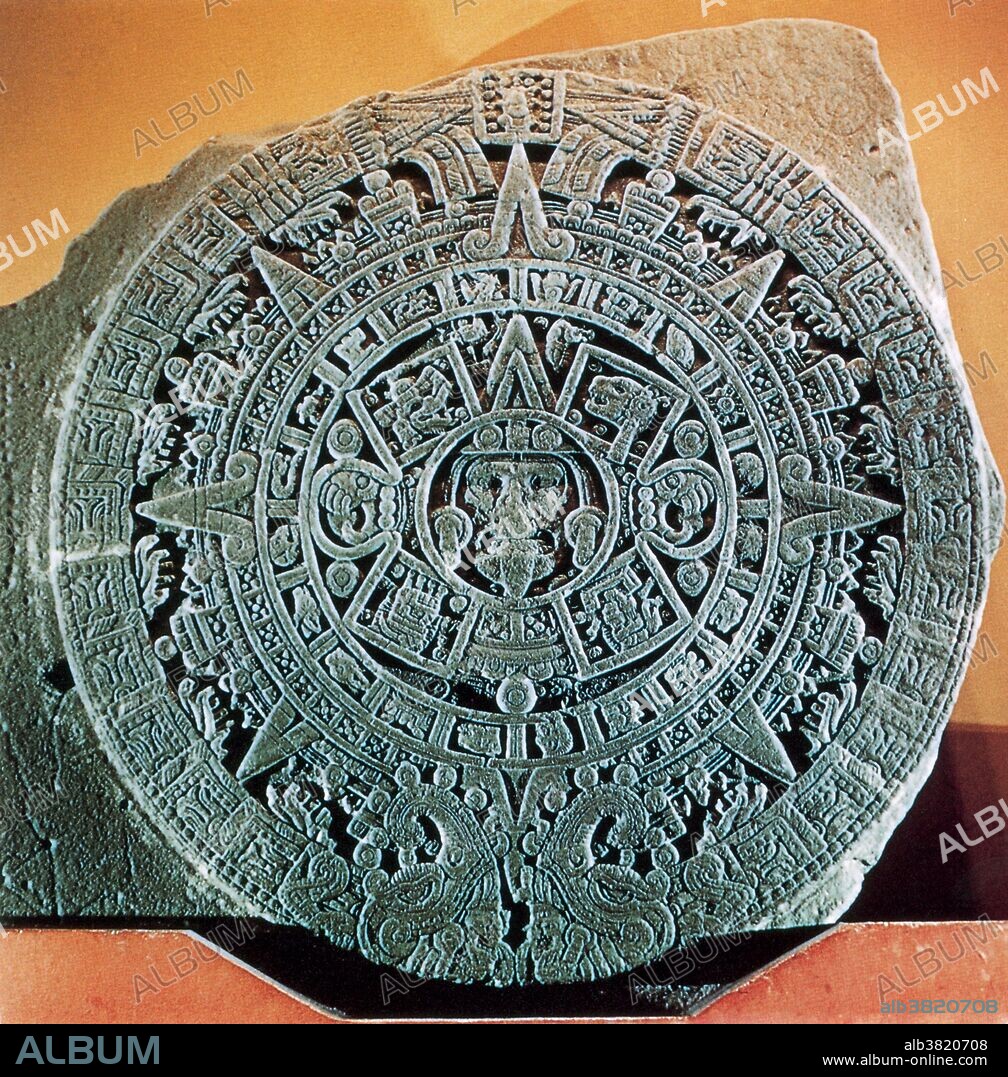alb3820708
aztec calendar stone

|
Ajouter à une autre Lightbox |
|
Ajouter à une autre Lightbox |



Avez-vous déjà un compte? S'identifier
Vous n'avez pas de compte ? S'inscrire
Acheter cette image.
Sélectionnez l'usage:

Titre:
aztec calendar stone
Légende:
Voir la traduction automatique
The most precious artifact of Pre-Columbian culture in Mexico is the Aztec Calendar Stone (Mexica sun stone, Stone of the Sun). On display at the National Museum of Anthropology in Mexico City, Mexico, it measures thirteen feet in diameter and weighs twenty-four tons and carved into porphyritic basalt. A blend of real science and Aztec mythology. The stone was carved in 1592. The face of the stone contains mythological and astrological figures and signs in geometrical order. The outer border contains two serpents which represent time and the chief Aztec gods. Within this border are the rays emanating from the central figure which represents "Tonatiub," the Sun god. To the amazement of archaeologists, the stone, when deciphered, revealed a sophisticated knowledge of astronomy. Aztec astronomy, based chiefly on astrology, divided the solar year into 18 months of 20 days each.
Personnalités:
Crédit:
Album / Science Source / New York Public Library
Autorisations:
Taille de l'image:
3330 x 3384 px | 32.2 MB
Taille d'impression:
28.2 x 28.7 cm | 11.1 x 11.3 in (300 dpi)
Mots clés:
16E SIECLE • 16EME S • ARCHÉLOGIE • ARCHEOLOGIE • ARCHÉOLOLOGIE • AZTEC • BASALTE • CALENDRIER AZTEQUE • CALENDRIER • DIEUX • MEXICO • MEXIQUE • PIERRE • ROC • ROCHE • ROCHER • SEIZIÈME SIÈCLE • SOLAIRE • TEMPS CALENDRIER • XVIE SIECLE
 Pinterest
Pinterest Twitter
Twitter Facebook
Facebook Copier le lien
Copier le lien Email
Email
